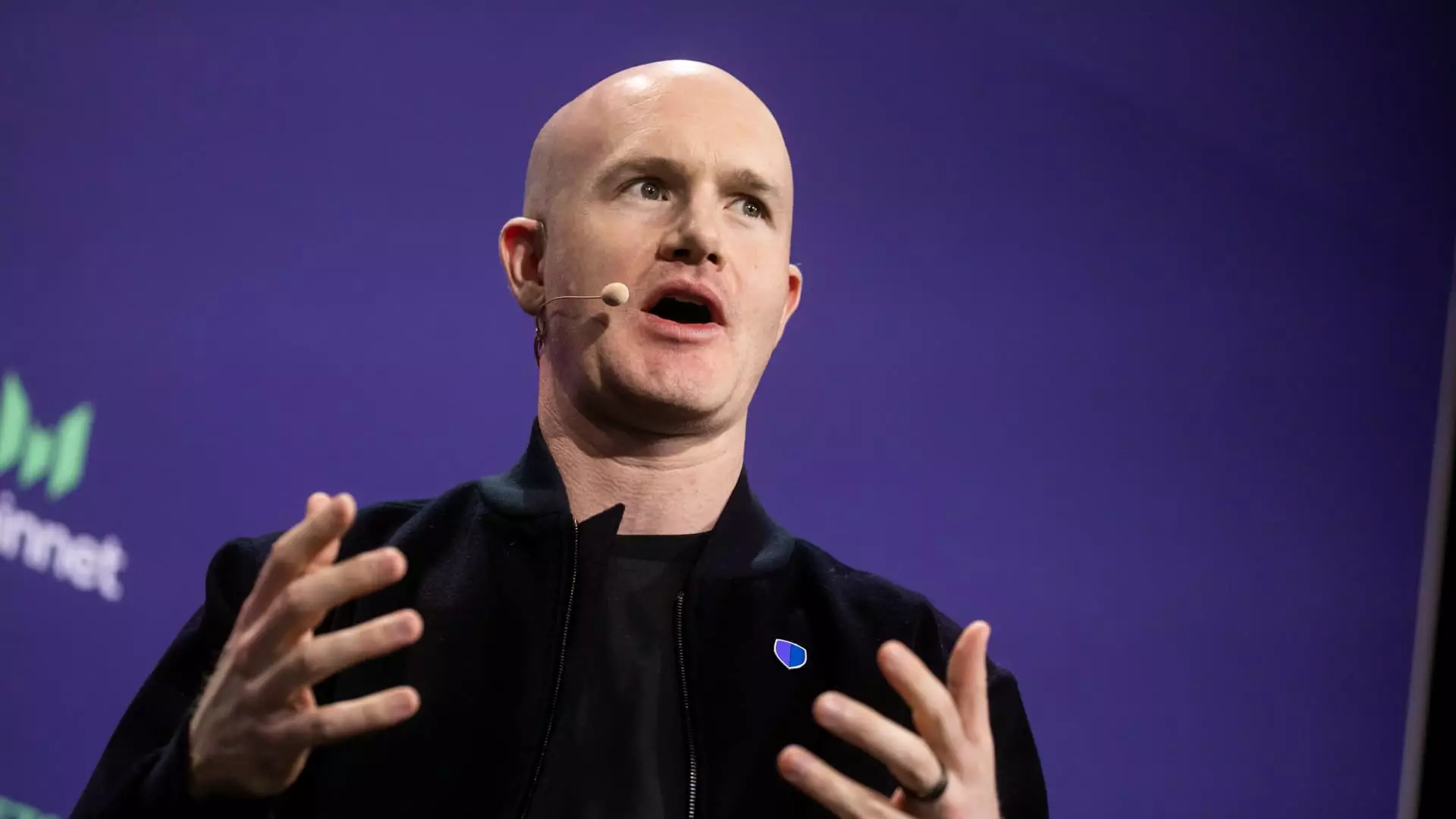The rise of cryptocurrency has not only transformed the landscape of digital assets but also revolutionized financial ecosystems. Coinbase, one of the prominent players in this arena, is ambitiously positioning itself to become a leading financial services company in the world over the next few years. In a recent analyst call, CEO Brian Armstrong illustrated the company’s intent to ride the wave of mainstream adoption of cryptocurrency by traditional finance systems. It’s a bold projection that hinges on a combination of innovative thinking and opportunistic strategy.
A Forward-Thinking Vision
Armstrong’s philosophy of “skating to where the puck is going” rather than where it has been resonates strongly in a world where traditional finance often moves at a snail’s pace. By categorically stating that Coinbase is not merely a cryptocurrency exchange, but rather an emerging multi-faceted financial platform, Armstrong creates a vision of a future in which crypto plays a significant role in everyday financial transactions. His assertion that “crypto is eating financial services” aligns well with the increasing prevalence of decentralized finance (DeFi) solutions that aim to disrupt antiquated banking practices.
By diversifying its offerings—encompassing everything from trading to stablecoin payments and institutional custody—Coinbase seeks to solidify its market positioning. This move is critical not just for growth, but for establishing itself as a foundational pillar within the new financial paradigm. The notion of becoming “the number one financial services app” is an ambitious pledge but, arguably, a necessary goal as digital assets infiltrate various sectors of financial activities.
Embracing Institutional Backing
The recent favorable regulatory stance from the Office of the Comptroller of the Currency (OCC), the Federal Reserve, and the Federal Deposit Insurance Corporation (FDIC) has created a fertile ground for cryptocurrency to flourish. By easing restrictions, these institutions indicate a paradigm shift toward cooperation rather than opposition. Coinbase’s business model aligns perfectly with this evolving environment as it positions itself to act as a conduit for banks willing to integrate crypto services. The comments from traditional financial leaders, such as Bank of America’s CEO allude to a dawning realization that integration of cryptocurrency could portend a necessary technological update within their systems.
However, this trend also bears caution. Armstrong cautions against banks attempting to create their own stablecoins, highlighting the importance of interoperability among different financial institutions. This perspective emphasizes a collective approach to cryptocurrency adoption, wherein shared infrastructure—much like shared APIs within tech—offers more significant benefits than fragmented solutions.
The Stablecoin Game
Coinbase’s strategic focus on stablecoins is indicative of its understanding of market demands. Strong interest from institutional customers manifests in the skyrocketing revenue associated with stablecoins, which has surged impressively over the last year. The mention of USDC, the stablecoin co-founded by Coinbase, as a tool for partnerships with banks signifies both a confidence in its superiority and a competitive outlook against Tether’s USDT.
Armstrong’s “stretch goal” to make USDC the prevailing stablecoin globally demonstrates not just ambition but profound understanding of market dynamics. Partnerships built on shared economics are essential to spur growth, especially as stablecoins increasingly become a preferred mechanism for both retail and institutional transactions. The ability to provide a secure, efficient, and liquid method of trade that passes regulatory scrutiny gives Coinbase an edge over its competitors.
A Paradigm Shift on the Horizon
As Coinbase pushes the envelope in terms of what a cryptocurrency exchange can be, its vision is more than just market share; it’s about redefining financial services for a new generation. The firm’s trajectory reflects the changing attitudes of both consumers and institutions towards digital assets, suggesting a paradigm shift that will redefine economic landscapes.
Yet, this ambition is not without challenges. As the crypto space remains fraught with uncertainty and volatility, Coinbase’s aggressive strategy demands resilience not only in technology but in regulatory navigation. It’s one thing to trailblaze new pathways in the financial services industry; it’s quite another to sustain that momentum against the backdrop of changing regulations and market dynamics. Coinbase is in the midst of a transformative journey, which, if successful, could potentially dictate the future of financial services for years to come.

